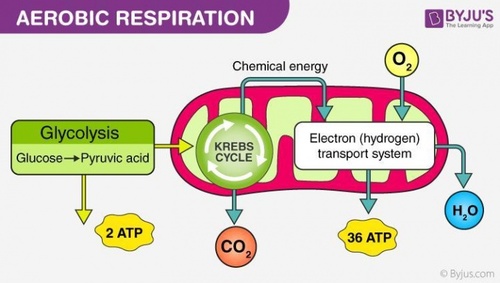

The aerobic energy system refers to the combustion of carbohydrates and fats in the presence of oxygen. The anaerobic pathways are capable of regenerating ATP at high rates yet are limited by the amount of energy that can be released in a single bout of intense exercise.
How does the aerobic system work in your body?
Image result for what is the aerobic system
Your aerobic energy system uses oxygen to produce energy. This energy is then stored and used for longer periods of exercise at a low intensity. The system converts glycogen into glucose. The glucose is then broken down during multiple stages to produce hydrogen ions, which get converted into ATP.
Aerobic means that the energy system needs oxygen to function. This means that the aerobic energy system relies on the circulatory system (breathing in oxygen) in order to create adenosine triphosphate (ATP) for energy use. It also uses fats, glucose, carbohydrates and proteins.
ATP is a multifaceted organic chemical which provides energy in order to drive many processes in living cells.
While the aerobic energy system can’t produce ATP at a very quick rate, it can store a lot more than other energy systems. This enables athletes to exercise for longer instead of harder.
The aerobic system can be divided into three processes:
Aerobic glycolysis (slow glycolysis)
Krebs cycle (citric acid cycle)
Electron transport chain
Aerobic glycolysis
During aerobic (slow) glycolysis, glycogen is converted to glucose.
A series of enzymes then break down the glucose to create Pyruvate.
Pyruvate then gets converted into acetyl coenzyme A as oxygen becomes present.
Krebs cycle
During the Krebs cycle, acetyl coenzyme A is broken down even more to create carbon dioxide and hydrogen.
Hydrogen combines with two enzymes and is transported to the electron transport chain where the acidity levels are controlled.Electron transport chain
The electron transport chain is responsible for producing 34 ATP molecules for every molecule of glucose that is used.
Hydrogen ions are carried to the electron transport chain by carrier molecules. They are then transferred to carrier molecules embedded in the electron transport chain where they undergo a series of chemical reactions.
A hydrogen ion gradient is created. As these ions move across this gradient, ATPase phosphorylates ADP is formed to create ATP.
Application
When you apply this knowledge of how the aerobic energy system works to an athlete, you see that as they use energy, the body keeps breathing in oxygen to fuel its energy system.
The system is activated when an athlete starts exercising and becomes the main system after one minute.
The aerobic energy system’s ability to store more ATP molecules than other energy systems allows an athlete to draw on this system to gain energy for a much longer period of time. Other systems, however, might allow the athlete to exercise much harder for a shorter period of time.
Training the aerobic system
You can develop your aerobic system so that it is able to store more ATP molecules at a time. Athletes often do this so that they can exercise for longer periods of time.
The best ways to train your aerobic system are:
Interval training – this is when the work periods of the workout exceeds several minutes and the rest periods are active, but at a lower intensity than could be sustained
Continuous training – this is when the exercise maintains a constant intensity and lasts for a longer time
‘Fartlek’ training – the exercise’s speed and effort varies throughout the session according to how they feel, without resting
Your aerobic energy system uses oxygen to produce energy. This energy is then stored and used for longer periods of exercise at a low intensity. The system converts glycogen into glucose. The glucose is then broken down during multiple stages to produce hydrogen ions, which get converted into ATP.
December 2, 2021
